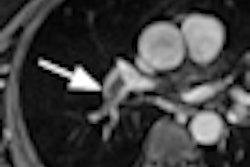Using volumetric MRI, researchers from the Cleveland Clinic have found that boxers and mixed martial arts fighters who take repeated blows to the head experience neurological changes, such as premature shrinkage in the hippocampus and thalamus regions, most likely related to brain trauma.
The results also indicate that continuous trauma to the head and brain can lead to chronic traumatic encephalopathy, and the data could provide a threshold as to when repetitive blows begin to cause measurable changes in memory and thinking. The findings are scheduled for presentation at this month's American Academy of Neurology (AAN) annual meeting in New Orleans.
"The brain in some sense can tolerate, adapt, or repair itself to a certain degree," said lead study author Dr. Charles Bernick, associate director of the Cleveland Clinic's Lou Ruvo Center for Brain Health in Las Vegas. "But if you have been pounding it for years and years and years, you will begin to develop these more permanent changes."
Knowledge gap
Speaking with AuntMinnie.com, Bernick said there is currently a huge gap in the knowledge of chronic traumatic encephalopathy. However, continued research on the effects of head trauma and concussions among retired athletes could prove insightful.
"What has been missing is the knowledge of how one goes from getting repetitive blows to the head to this chronic brain condition, which is terrible," he added.
Bernick's research is part of the ongoing Professional Fighters Brain Health Study. Given his base of operation in Las Vegas, which some boxing and mixed martial arts aficionados consider the "Fight Capital of the World," Bernick said fighters and organizations such as the Ultimate Fighting Championship and Nevada Athletic Commission have been very supportive of the research.
"In boxing and mixed martial arts, [chronic traumatic encephalopathy] is a condition we know. Athletes are receiving thousands of blows to the head over their career, and, in some cases, it is scheduled and measurable," he said. "We felt that this would be a good group to try to understand how repetitive head trauma or cumulative head injuries may cause these longstanding and chronic nerve and brain conditions."
Bernick and colleagues began enrolling fighters into the study about a year ago. Currently, 44 boxers and 65 mixed martial arts athletes, who hail from countries such as the U.K. and Brazil, have agreed to participate in the research.
Diffusion-tensor MRI
Using 3-tesla diffusion-tensor MR imaging, researchers began looking at a variety of measures, including blood flow and resting-state conductivity within the brain. For the AAN study, Bernick and colleagues used volumetric MRI to measure possible shrinkage in the hippocampus and thalamus, which happens naturally in normal individuals over time. These two regions of the brain are associated with memory and sensory and motor skills.
The researchers divided the study's 109 participants into three groups: athletes who had fought for less than six years, those who had fought for six to 12 years, and those with more than 12 years of experience. In each group, they sought to assess whether there was a relationship between the number of fights and the volume of the athlete's hippocampus and thalamus.
Among athletes who fought between six and 12 years, a greater number of fights was associated with smaller volumetric size of the thalamus and hippocampus, the researchers found. In combatants who fought more than 12 years, the greater number of fights resulted in slower processing speed and poor memory.
"Our interpretation is that you start having changes in brain structure initially, and then, down the line, you start getting symptoms and the [degenerative] process is beginning sooner," Bernick said. "The radiology part is the most exciting part [of the study] because, short of an autopsy, [MRI] is the best way to understand what is happening to the structure of the brain. So imaging is huge as an outcome measure in our project."
Follow-up research
Bernick added that the findings represent a cross-sectional view of just one point in time of the athletes' careers, and results must be confirmed with annual follow-up with these individuals and other fighters.
"As we look for methods to protect athletes and prevent long-term complications, we might not want to wait until they become very symptomatic," he said. "By that time, you have very much bought the farm."
The Professional Fighters Brain Health Study is funded by investor Kirk Kerkorian's Lincy Foundation and will continue for the next four to five years.
"Every year we will add individuals, so by the end of the study we should have more than 600 fighters with various degrees of follow-up," Bernick said. "Our hope is that [our findings] can be applied to other sports, the military, and anyone who can be exposed to repetitive head trauma."



















